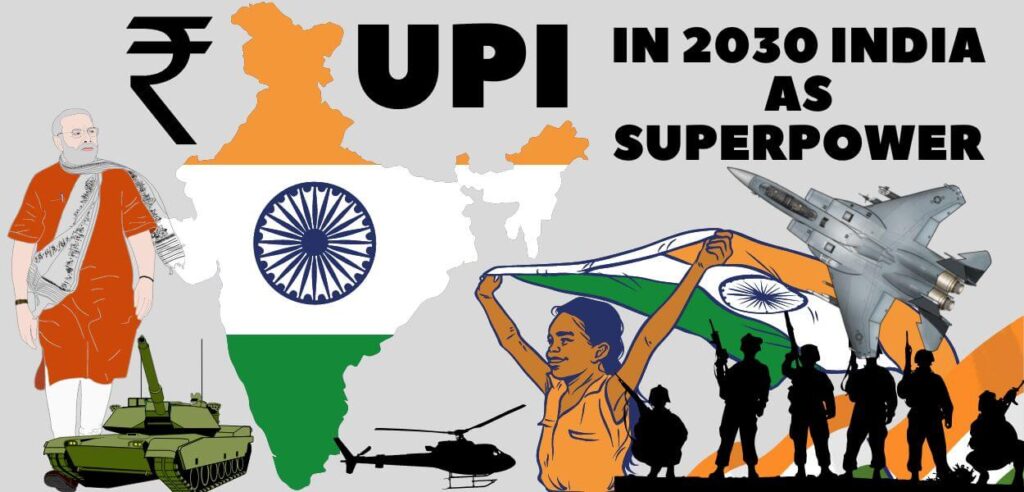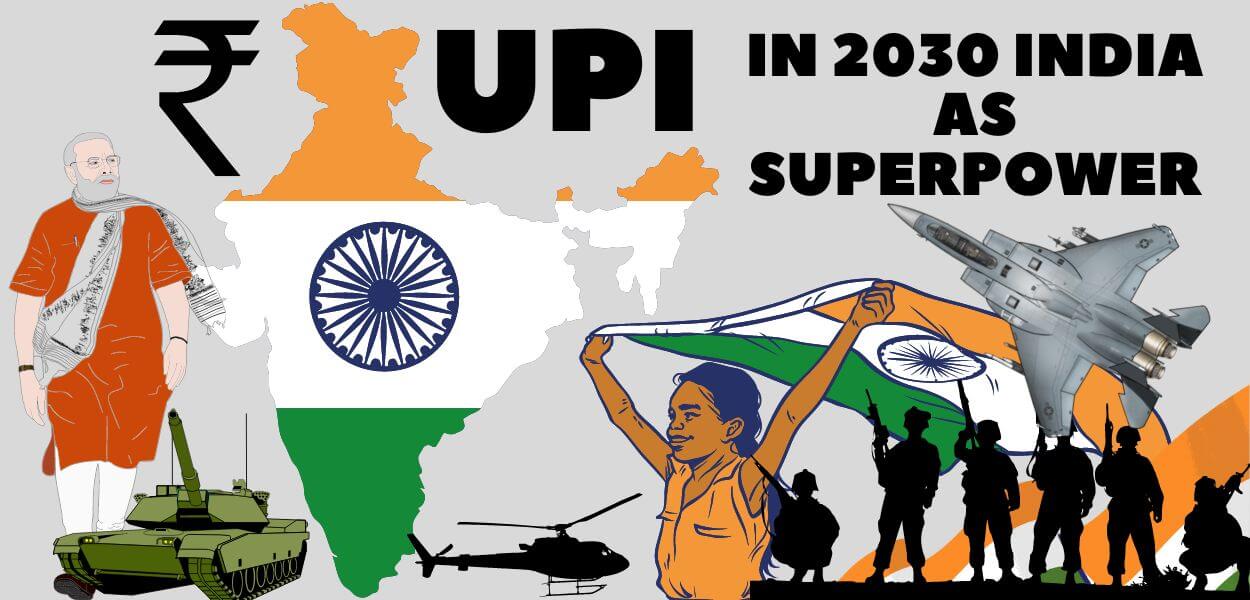India has long been considered a rising superpower, with a rapidly growing economy and a large population. However, many experts believe that the country has the potential to become a superpower in the coming years. This article will explore the various factors that are driving India’s rise to superpower status, and how the country can continue to build on its strengths to achieve this goal.
In 2030 India as Superpower

One of the key drivers of India’s rise to superpower status is its rapidly growing economy. Over the past decade, India’s GDP has grown at an average rate of around 7%, which is among the highest in the world. This strong economic growth has been driven by a number of factors, including a rapidly expanding middle class, a growing manufacturing sector, and an increase in foreign investment.
In order to continue this growth trajectory, India will need to focus on building its infrastructure, which is currently inadequate to support the country’s rapid economic growth. This includes investing in transportation, power generation, and telecommunications. Furthermore, India should also focus on improving its human capital by investing in education and training, which will be crucial for building a skilled workforce that can compete on the global stage.
Another important factor in India’s rise to superpower status is its large population. With over 1.3 billion people, India is the second most populous country in the world. This large population gives the country a significant advantage when it comes to labor and consumer markets. However, to fully leverage this advantage, India will need to improve the living standards of its citizens, and provide them with the education and training they need to be productive members of the workforce.
As the world economy becomes increasingly globalized, India’s ability to build strong diplomatic relationships with other countries will also be crucial to its rise to superpower status. India should focus on building strong ties with other major powers, such as the United States, China, and Russia, as well as with other rising powers in the region. Additionally, India should also work to promote peace and stability in the region, by playing a more active role in regional organizations such as the United Nations and the World Trade Organization.
Reducing corruption, bureaucracy, and streamlining regulations will also be important for India’s rise to superpower status. Currently, India is ranked 116th out of 190 countries in the World Bank’s Ease of Doing Business Index. This is due to a number of factors, including bureaucracy, corruption, and lack of transparency. To attract more foreign investment and promote entrepreneurship, India will need to address these issues and make it easier for businesses to operate in the country.
In addition to these factors, India will also need to focus on good governance, in order to achieve its goal of becoming a superpower. This includes reducing corruption and promoting transparency, as well as ensuring that the government is responsive to the needs of its citizens. Additionally, India should focus on building a strong legal system that can protect the rights of its citizens and provide an environment that is conducive to economic growth.
Overall, India’s rise to superpower status is driven by a number of factors, including its rapidly growing economy, large population, and ability to build strong diplomatic relationships with other countries. To continue this trajectory, India will need to focus on building its infrastructure, improving its human capital, and reducing corruption and bureaucracy. Additionally, good governance and a focus on promoting peace and stability in the region will also be crucial for India’s continued rise. With the right strategies in place, India has the potential to become a superpower in the coming years.
follow us for more
follow us for hindi Join now
